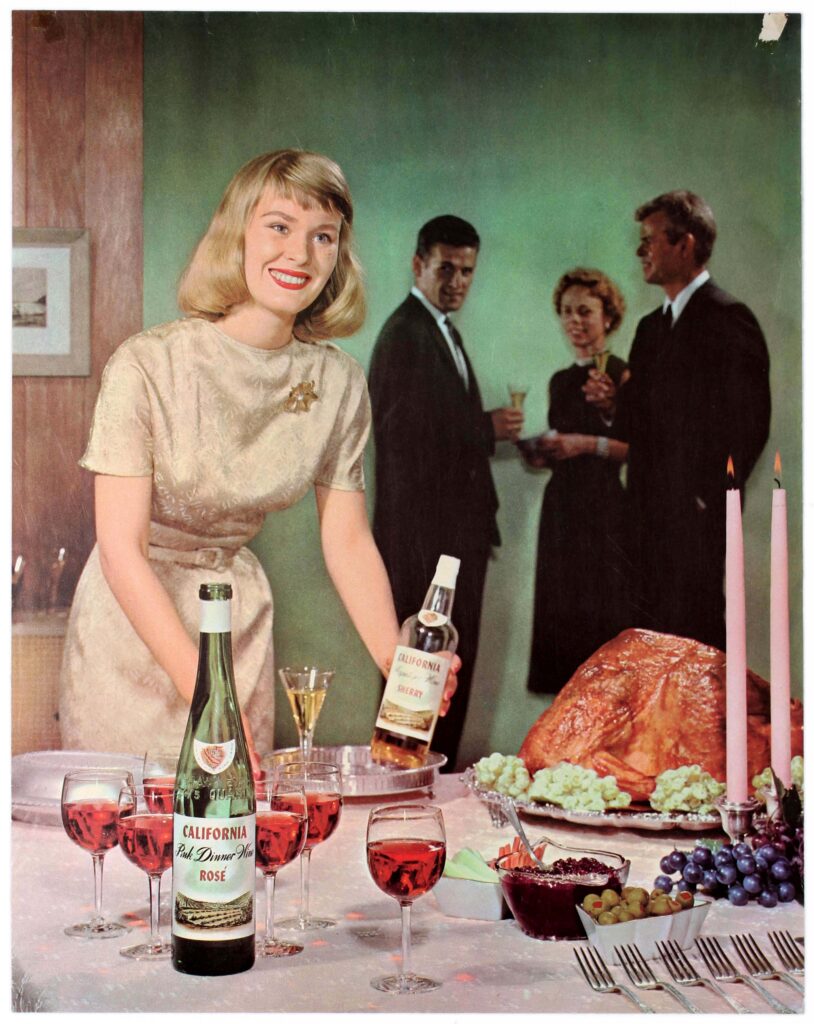
What’s in Your Rosé? A Guide to the Season’s Favorite Wine
Ah, spring is here, and with it comes the urge to get outside and dust the cobwebs of winter out of our hearts and minds. The signal of warmer days and leisurely evenings also means the opportunity to pop open the season’s favorite beverage: Rosé wine.

A Brief History
Believe it or not, even the ancient Greeks used to “rosé all day”, but America’s love for pink wine began in earnest in the 1960s and therefore the adults from that generation (“Boomers”) became the first generation of wine-drinking adults.
Their parents – from the “Mad Men” era – were focused on cocktails, and if wine was served, it was usually sweet. Boomers were passionate about learning and loving wine and raised their Millennial children with enough knowledge to go forward and forge their own style in the wine industry.
They sought affordable luxury without the complication of vintages and varietals. And they fell in love with Rosé wines — sophisticated and affordable. By the early 2010s, rosé wines captured the hearts and palates of American wine drinkers. The result was an explosion in the number of wineries making rosé.
What is Rosé Wine?
Rosé, also known as pink wine, is crafted by crushing the fruit and allowing it to macerate, imparting its delicate hue. There are various methods to create rosé, with the direct press and maceration being the most common. Direct press yields lighter hues and brighter flavors, while maceration results in deeper, fuller-bodied wines.
Rosé can range from peach-colored to nearly red, and each shade offers a different tasting experience. Grenache, Syrah, Cabernet Sauvignon, Tempranillo, Mourvèdre, Pinot Noir, Zinfandel, and Cinsault are all common varieties used to make rosé and rosé blends. Blending varietals allows the sum of the parts to create a more special and unique wine. With so many wineries creating rosé, these blends are what help one winery stand out from another.

Photo from dewinespot.co
Read labels, recognize the flavors that you enjoy most, and seek rosés that align with your palate and preference. Ask your favorite wineries if their rosé is purpose-built and pre-planned from specific vines and varietals that will reflect that winery’s commitment to crafting an exceptional rosé experience.
Provence is regarded as the most versatile — and the driest — of all rosés. The region has been producing some of the finest since the Renaissance, and over time has become renowned for its pale and delicate style. Provence rosé is typically made as a blend of Grenache, Mourvèdre, Syrah, Cabernet, and Pinot. New world (American) rosé wines made of these varietals make a wonderful opportunity to compare and contrast terroir (land and climate) conditions and their impact on this delicious and most popular style.
Even though rosé wines are on the more elegant side, they are a beautiful juxtaposition between white and red: they offer the more feminine profile of a white wine yet still provide some of that beautiful structure people love in red wines. As the wine’s hue deepens, so does the wine’s style. The lighter the color, the closer to a white wine’s floral notes, minerality, and clean finish. The darker the color, the closer to a red wine’s fuller body, red berry flavor, and earthy notes.
Drink or Hold?
Unlike wines that get better with age, rosé wines are intended to be consumed within a few years of production. There’s no benefit to holding them, and over time they will lose their brightness.
Pairing Rosé
Rosé is among the most versatile wines, and perfect for any occasion. Often referred to as “liquid sunshine” or “summer water”, it’s a must-have when entertaining through the spring and summer months. It’s a favorite year-round for trendy food styles and takeout and is the #1 choice for a host gift.
Here are some of our favorite food pairings:
- Fresh seasonal salads with berries, soft cheeses, and lemon vinaigrette
- Grilled skewers drizzled with lemon and herbs
- Sheet pan vegetables with feta
- Grilled salmon and mango salsa
- White pizza with pancetta and arugula
- Chinese dumplings and Peking duck
- Pad Thai
- Your most luxurious charcuterie board! Green olives, artisanal cheeses, mustard, preserves, fresh fruit, and focaccia bread

Rosé Cocktails
Rosé is delicious on its own, but sometimes in the hot months, you want a drink that’s bubbly or more citrusy. For a fun summer cocktail, you can add a splash of gin, vodka, and even tequila with sparkling water and fruits to create something refreshing and unique. One of our favorite Rosé cocktails is the Provence Cooler. Raise a glass to the pink pleasures of spring and the journey of discovering your favorite rosé! Salut!
About Donelan 2023 Rosé
Our grapes are chosen from specific varietals and based on the bounty of each year’s growing season. Our 2023 vintage is an amazing blend of Grenache (47%), Pinot (38%) and Mourvèdre (15%). Whole cluster press yields the special brightness and salmon-pink hue typically found in Provence-style American rosés. This delightfully dry wine has notes of white peach, nectarine skin, and macerated strawberries, all carried by a persistent mouthfeel. Barrel fermented and sur lie aged in natural French cooperage adds to its texture and depth. Ready to be paired with a pool and bright summer day! Enjoy!



